World 🢖 Europe 🢖 Italy 🢖 Tuscany
Cities and towns 🢔 Settlements 🢔 Architecture wonders 🢔 Categories of wonders
Wonder
Centre of Florence

 In short
In short
The modern, powerful and enlightened Europe was born in Florence in the late 13th – early 14th century, when Renaissance started there. It is possible, that this city has the highest concentration of art values in the world.
 68.2%
68.2%
GPS coordinates
Name in Italian
Founded
Area
UNESCO World Heritage status
Map of the site
If you see this after your page is loaded completely, leafletJS files are missing.
 In detail
In detail
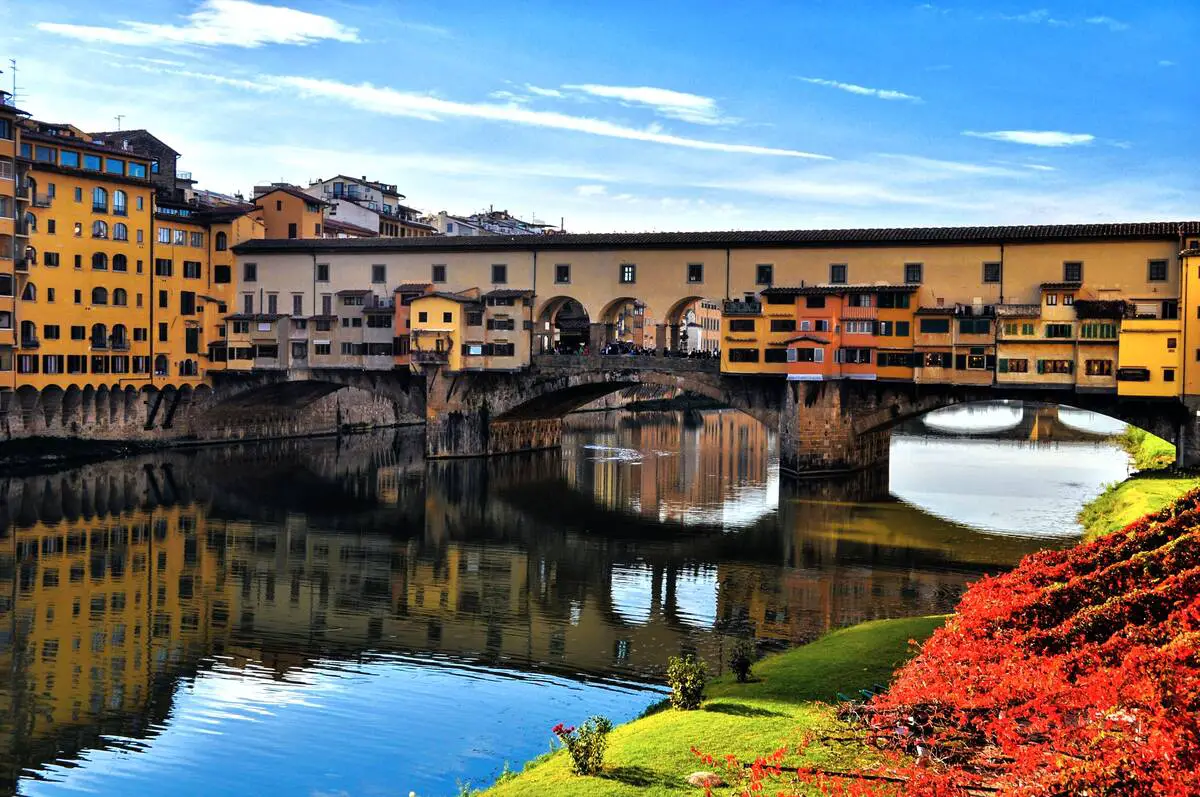
Chronology
Ancient times
- 10th – 8th centuries BC – it is possible that there was a settlement near the site of the present-day Ponte Vecchio, where the Mugnome River flowed into the Arno River (now Mugnone is diverted).
- 7th – 6th centuries BC – Etruscans used this site to cross the Arno River. There is a low chance that they had a settlement in this location: so it is hard to fortify it.
- 59 BC – Florence (then – Florentia) was mentioned in written sources for the first time. This was a newly developed village for Roman army veterans, where the first families settled over the coming decades. The village was founded on the place where the important road – Via Cassia – crossed the Arno River. The river was navigable then and in Florentia was a port.
- 123 AD – the first known bridge was built across Arno.
- 285 AD – in Florentia was stationed the command of Tuscia, the former Etruscan lands. Tuscia was larger than today’s Tuscany.
- Early 4th century AD – Florentia became a seat of a bishopric. Florentia was an affluent, lively city in the times of the late Roman Empire. There were many magnificent structures, but, due to the rebuilding of the city little remains of the Roman heritage in Florence today.
Middle Ages
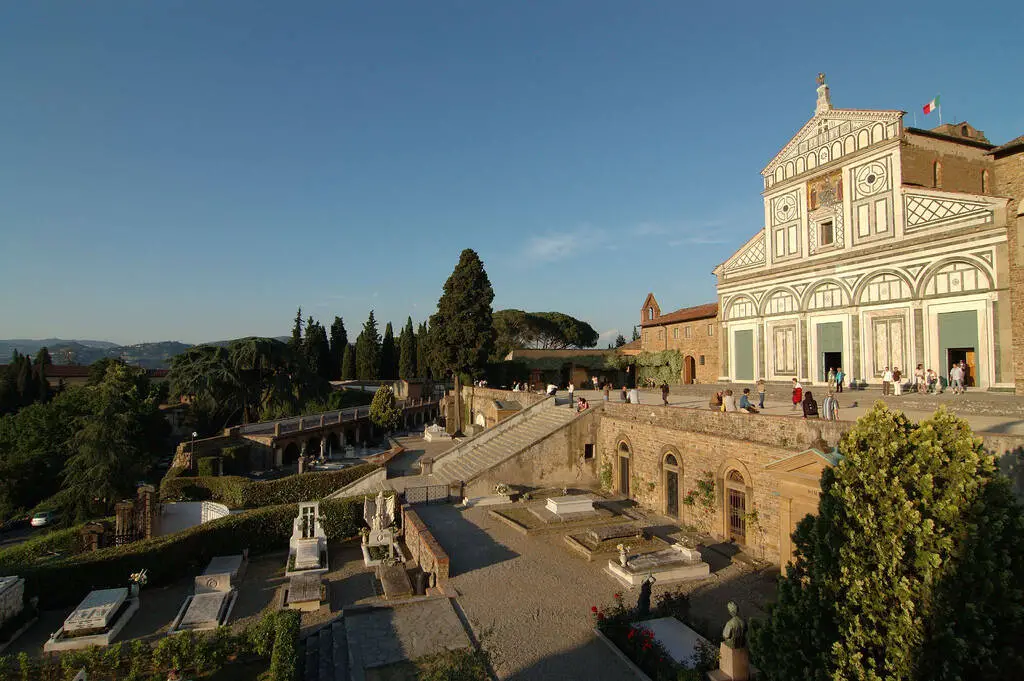
- Late 4th – 5th centuries – Florence was caught in the power struggle between the Ostrogoths and the Byzantines and frequently experienced siege and war. Its population fell to some 1,000 inhabitants.
- 774 – Florence was captured by the forces of Charlemagne and the ensuing period of peace gradually brought life back to the city.
- Around 1000 – Florence became the capital of Tuscany, taking this title from Lucca.
- 1115 – 1119 – the rebellion of the people of Florence against the rulers of Tuscany led to the formation of the Republic of Florence. Since then Florence was governed by a council. This vastly improved the governance of the city and it gradually turned into the wonder of the Renaissance some centuries later. Nevertheless, this fast development was not simple at all: the city was an arena of a deadly power struggle between influential local families and feuding with other merchant cities.
- 13th century – early 14th century – the city was divided by the internal strife between Ghibellines (supporters of the influence of the Germanic Holy Roman Empire over this region of Italy, mostly rural aristocracy) and Guelphs (supporters of the influence of the pope in Rome, for the most part, city merchants). As time went on, this feud turned into a local feud between Italian cities and influential families.
Renaissance
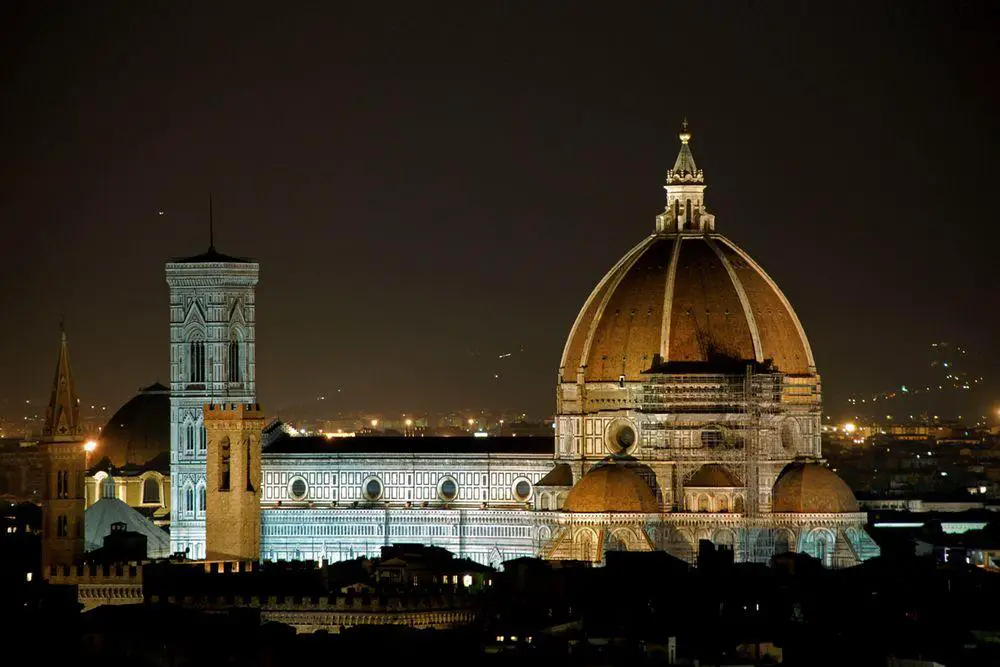
- 1252 – the Republic of Florence started to mint its currency – florin. These golden coins were minted in large amounts (the city was very rich) and used by influential Florentine banks and international merchants. It further increased the wealth of Florence.
- 1293 – 1295 – merchants of Florence gained even more influence over the former aristocracy through the Ordinances of Justice that barred the aristocracy from holding positions in city offices.
- 1296 – the construction of the new city cathedral was started. Florence Cathedral initially was planned as a giant Gothic structure, but during its long construction period over the 14th century, architectural and technological innovations marked the birth of a new style in architecture – Renaissance architecture.
- The 14th century and later – with the gradual fall of the Byzantine Empire Greek scholars emigrated to Western Europe and many of the best ones were invited to Florentine schools and universities.
- 1308 – 1321 – Florentine author Dante Alighieri created Divine Comedy – one of the most influential literary works. This is one of the first literary works in Europe that was written in a vernacular (e.g. locally used, living) language. Thus the Tuscan dialect set the basis for the future Italian language.
- 1338 – 1351 – the pandemic of the bubonic plague – the Black Death – reached Florence and decreased the number of city inhabitants from around 110,000 to 50,000. Especially bad was 1348, when some 80% of people in the city perished.
- 15th century – early 16th century – flourishing of Renaissance arts and architecture in Florence. In these times it was a habit of influential and rich families (especially Medici) to invest in arts. Florence brought to the world the art of Leonardo da Vinci, Michelangelo Buonarotti, Sandro Botticelli, and numerous other outstanding painters.
- 1513 (published in 1532) – Florentine diplomat Niccolò Machiavelli created the political treatise The Prince. The raw realism and practicality in this and other of his works have largely influenced European political philosophy and political science up to this day.
- 1494 – after the flight of Piero di Lorenzo de Medici (Piero the Unfortunate) from Florence new times started in Florence. Dominican friar Girolamo Savonarola started his short-termed reign in the city, preaching austerity and renewal of the church. This period started the downfall of the Renaissance period in Florence.
- 1529 – 1530 – Siege of Florence ended the Republic of Florence. The new ruler of Florence was Alessandro de’ Medici, of the same Medici family, but now he ruled Florence as a monarch. The importance of Florence decreased due to the wars in the region, the gradual collapse of trade routes through Italy, and the development of trade and industry in the Netherlands, United Kingdom, and France.
Florence after the Renaissance and in the modern times
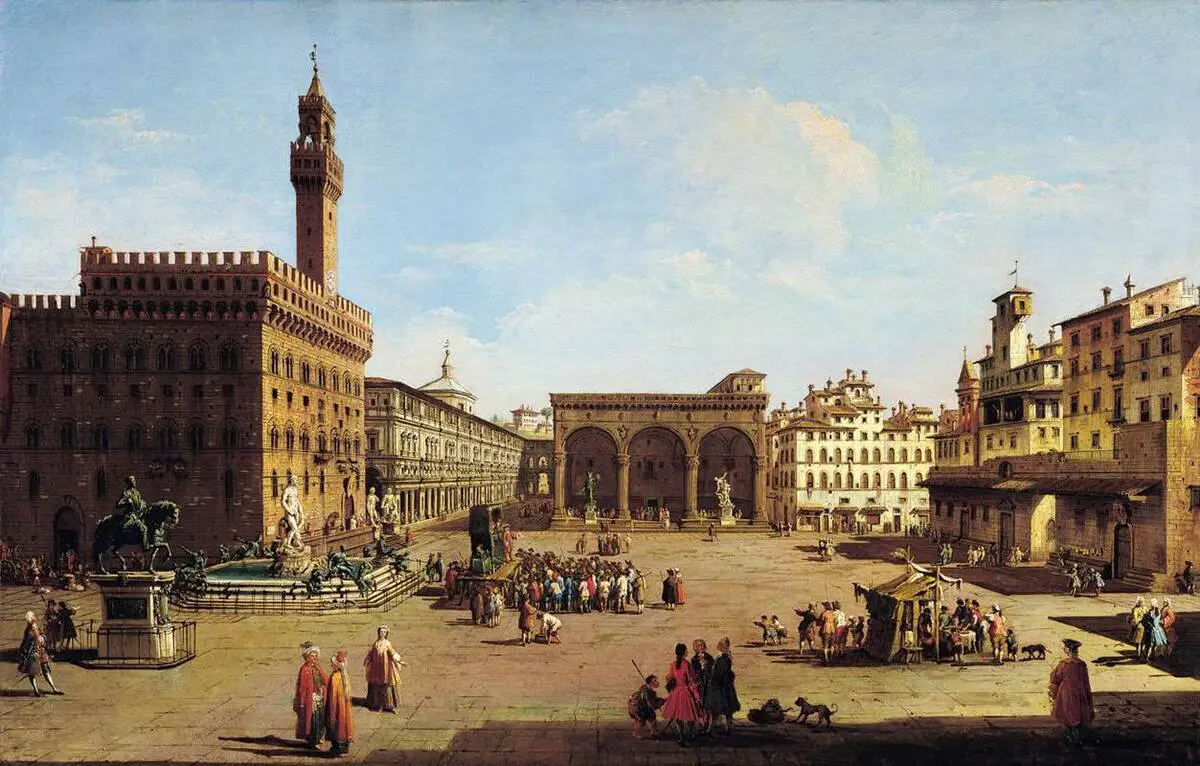
- 1531 – 1737 – rule by the Medici dynasty.
- 1737 – 1859 – Florence together with Tuscany was a part of the Austrian crown lands.
- 1861 – Tuscany became a province in the Kingdom of Italy.
- 1865 – Florence became the temporary capital city of Italy (until 1870) and modernization works started in the historical center. The central square of the city – Piazza della Repubblica – was extended. These works raised awareness about the cultural values in the city and further modernization efforts were stopped.
- Late 19th century – fast development of the city started and the number of inhabitants increased fast. Numerous noblemen and also painters and authors came to live in Florence from other parts of Europe.
- 1943 – Allied forces bombarded the historical center of Florence and many buildings were lost.
- 1966 – unusually powerful flash flood of the Arno River caused immense damage to the historical heritage of the city, especially to the millions of manuscripts and books. The efforts in saving this wealth led to the development of multiple methods of art conservation, and works continue up to this day.
- 1982 – the historical center of the city was included in the list of UNESCO World Heritage sites.
Geography
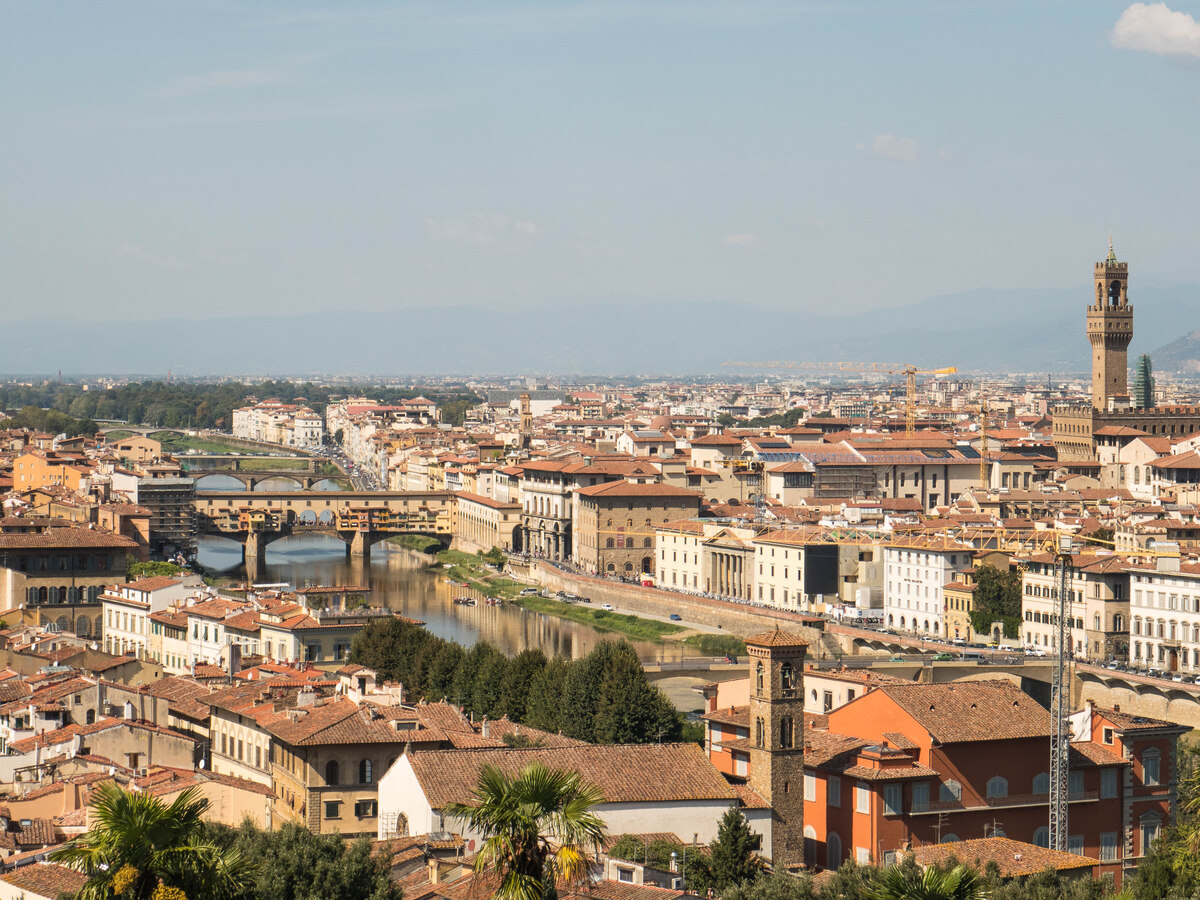
Florence developed on the banks of the 70-90 m wide Arno River that after some 100 km reaches the Tyrrhenian Sea. Most of the city is to the north of the river but dense historical quarters and many historical buildings are on the southern bank as well. This southern neighborhood is named Oltrarno.
Central part of the historical city is comparatively flat but hills surround the city. To the south, near the city are somewhat lower hills with interesting historical churches, fortifications, villas, parks, and vineyards. Many of the traditional panoramas of Florence are taken from these hills, for example from San Miniato al Monte Basilica.
The historical center of the city (core zone of the UNESCO World Heritage monument) is 532 ha large. Earlier it was encircled by city walls that for the most part were removed in the middle of the 19th century. Now city walls remain in the Oltrarno neighborhood.
The historical center of Florence is preserved in unusually good condition.
Notable buildings
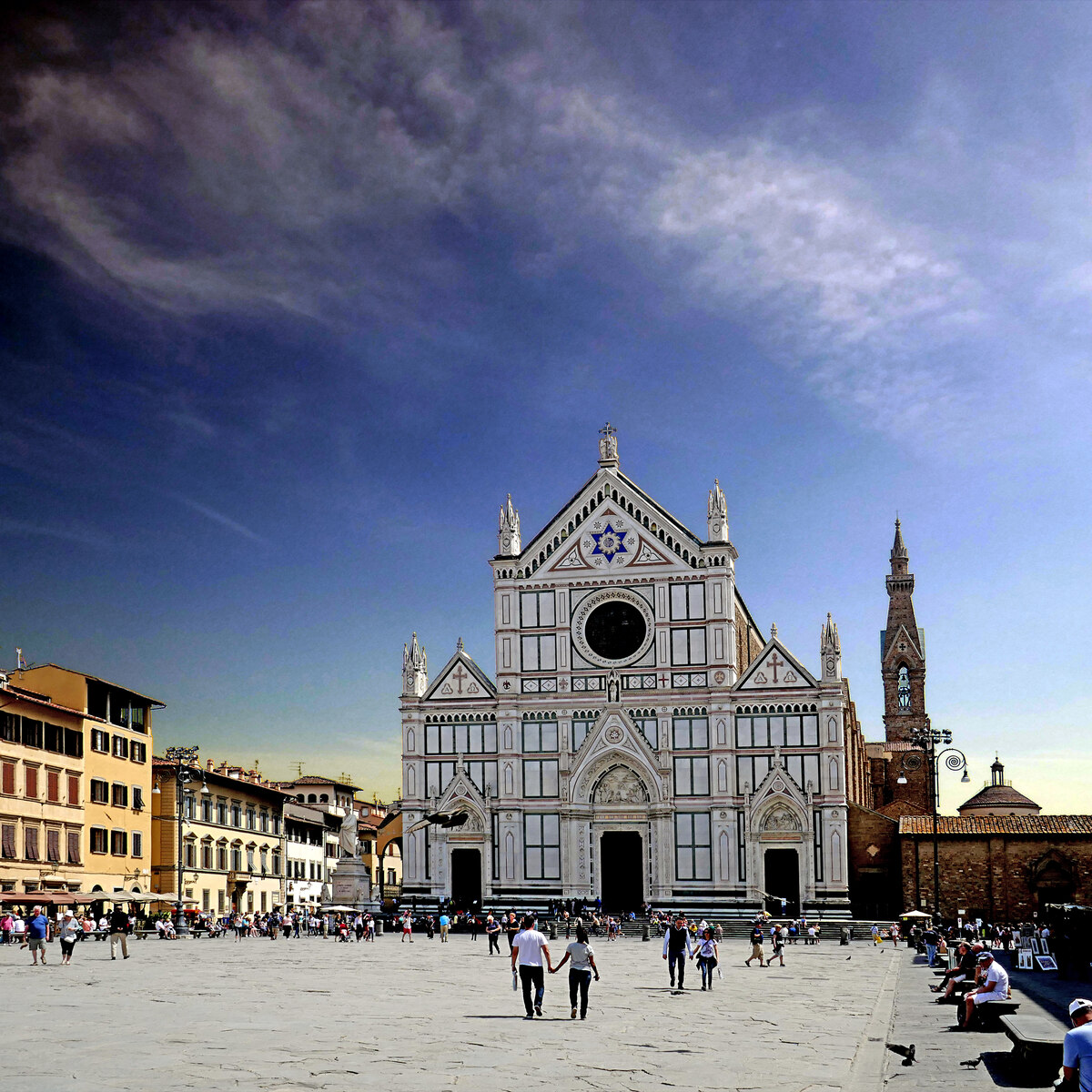
- Florence Cathedral – constructed in 1296 – 1469 (facade – 1887). This is one of the most magnificent structures in the world. This enormous church was started in Gothic style but during its long construction period, one of its engineers and architects Filippo Brunelleschi made a breakthrough in the history of arts: this is the first true structure in Renaissance style.
- Palazzo Vecchio – the historical town hall of Florence. It was constructed in 1314 in a rustic Gothic style and is designed as a massive, fortified castle with a 94 m tall clock tower. Many rooms in the town hall have ornate interiors with many valuable works of art.
- Ponte Vecchio – unusual medieval bridge across Arno. Bridges there existed for millennia but the current one was built in 1345. The bridge is covered with buildings – jewelry shops, but above, on the second level leads a covered passage – Vasari Corridor that connects Palazzo Vecchio and Palazzo Pitti.
- San Miniato al Monte – a beautiful basilica on a hill south of Arno, overlooking the central part of the city. It was built in 1018 and is one of the most beautiful churches in the Romanesque style.
- Santa Croce – one of the most impressive Gothic cathedrals in Italy, constructed in 1294-1385. In this beautiful church have been buried many outstanding people: Michelangelo, Galileo, Machiavelli, and Rossini.
- San Lorenzo – ancient, enormous church. The first church there was consecrated in 393 AD, the current one was built in 1419 – 1470. Together with the much better-known nearby Florence Cathedral, it is one of the first Renaissance structures. Important parts of this complex structure are the Old Sacristy (designed by Filippo Brunelleschi in 1440ies), the New Sacristy (planning was based on Michelangelo’s designs, started in 1520ies), and Medici Chapel with an enormous domed structure (17th century).
- Santa Maria Novella – gorgeous church with a fine marble facade. It was constructed in Gothic and Renaissance styles in the 1270ies – 1360ies.
- Palazzo Pitti – an enormous palace on the southern part of the Arno River. The main part was built in Renaissance style in 1458 by the local banker Luca Pitti, but later it was bought by the Medici family and it was the seat of the dukes of Tuscany. Now, this is one of the great museums of the world with hundreds of famous paintings and other works of art by Renaissance and Baroque artists.
- Uffizi Gallery – one of the most important art museums in the world. The museum is housed in the former offices of the Florentine magistrates that were built in 1581 in Renaissance style. In 1765 it was opened as a museum for the public. Numerous world-famous works of art are there.
 Linked articles
Linked articles
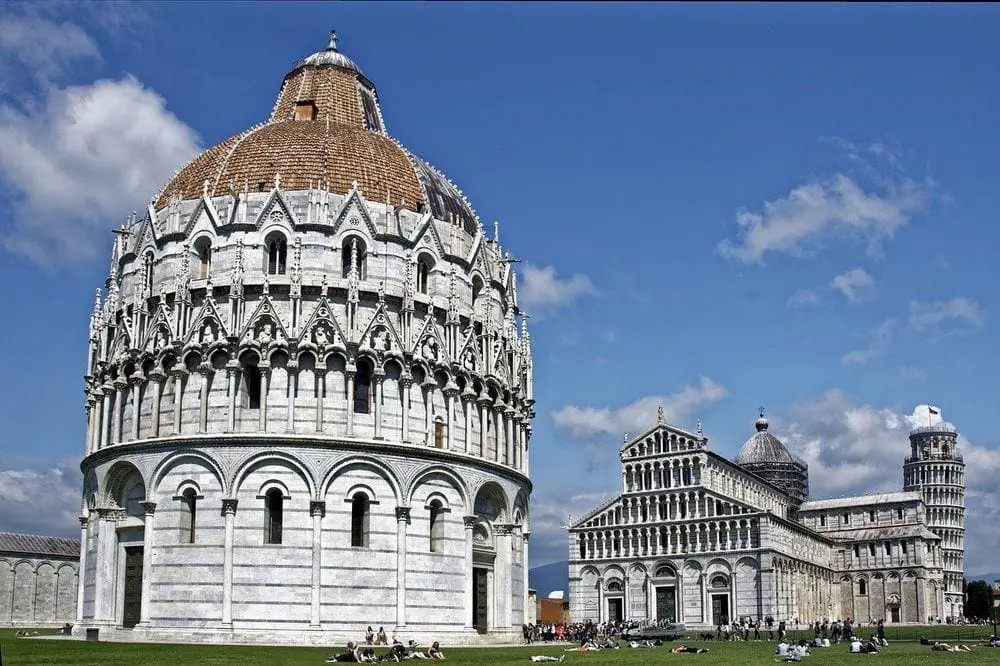
Wonders of Italy
Italy is one of the most popular destinations in the world due to its unsurpassed cultural heritage – this country has got some of the finest monuments of architecture and art in the world.
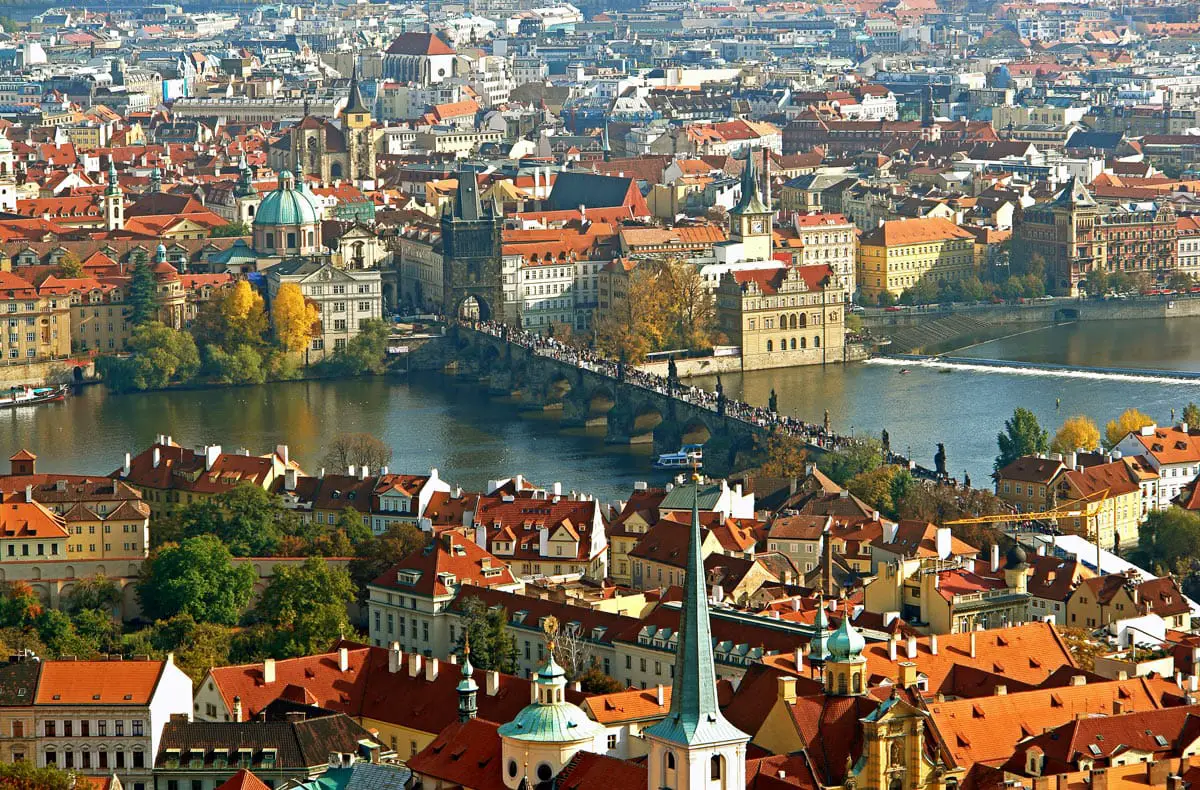
Cities and towns
Many of the most popular and exciting landmarks in the world are cities and towns. Millions of tourists are attracted to such cities as Venice, Florence, Prague, and Jerusalem. They never fail to impress and one will always find something new and unexpected here.
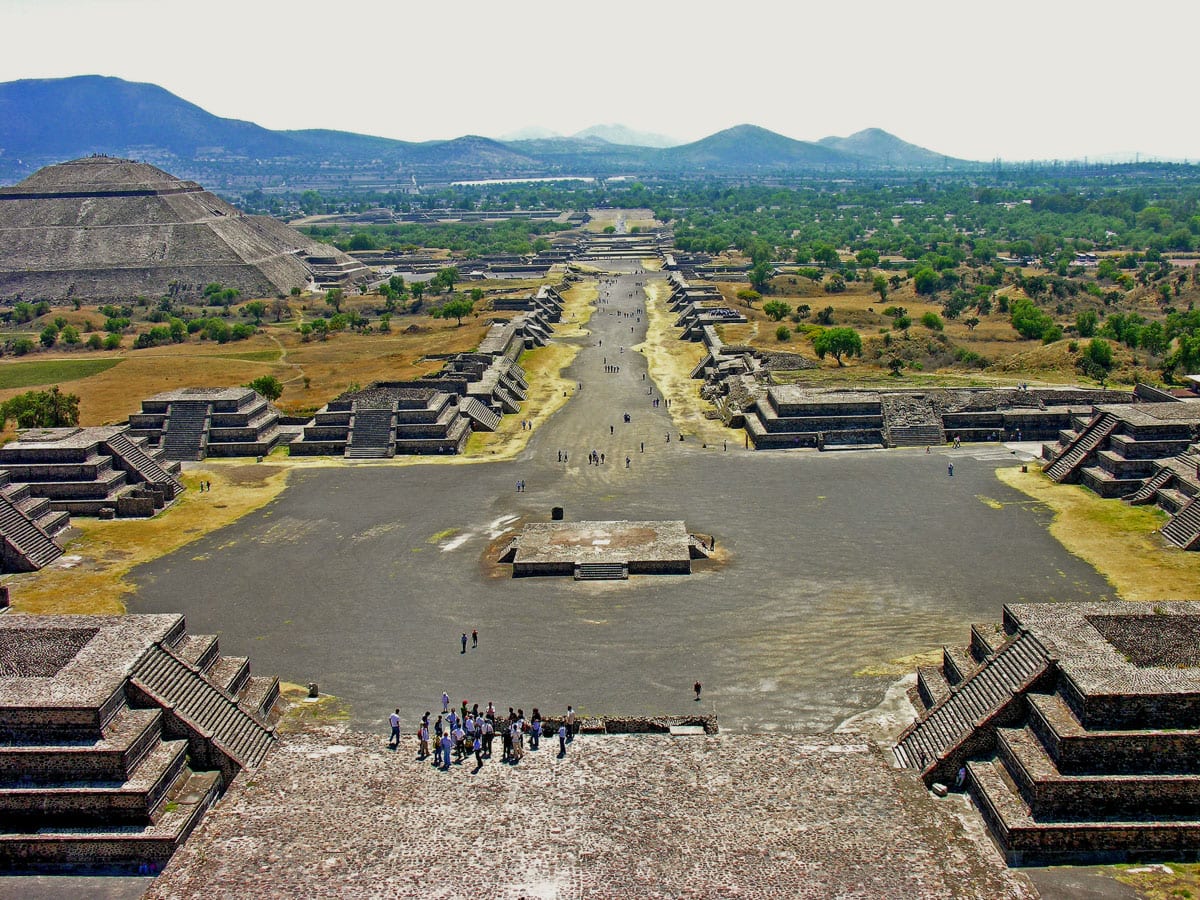
Ancient cities and towns
It turns out that urban planning is a very old profession. The urban fabric of ancient settlements – their structure and evolution gives a lot of food for thoughts about the nature of humans and civilization.
Wondermondo includes in the category of ancient cities and towns those settlements which have developed as urban areas at least 1500 years ago: around 500 AD.
 Recommended books
Recommended books
Florence: The Paintings & Frescoes, 1250-1743
This is the most comprehensive book on the paintings and frescoes of Florence ever undertaken, with more than 2,000 beautifully reproduced artworks from the city’s great museums and churches-produced in the same manner as BD&L’s The Louvre and The Vatican.
Rick Steves Pocket Florence
Make the most of every day and every dollar with Rick Steves! This colorful, compact guidebook is perfect for spending a week or less in Florence.


